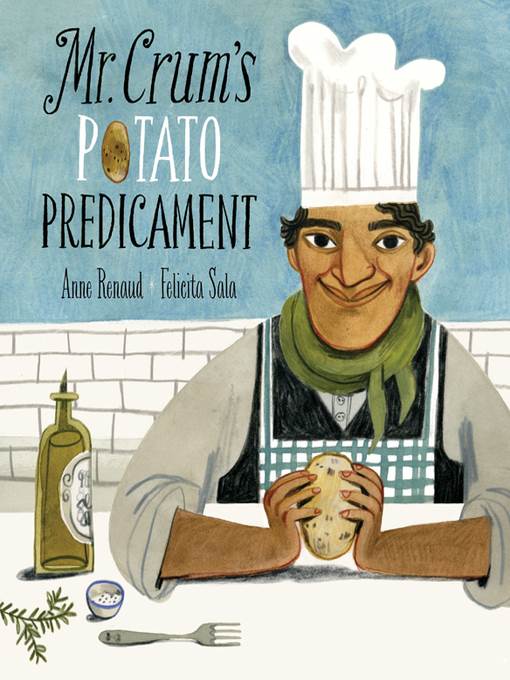
Mr. Crum's Potato Predicament
فرمت کتاب
ebook
تاریخ انتشار
2017
Lexile Score
940
Reading Level
3-6
ATOS
5.1
Interest Level
K-3(LG)
نویسنده
Felicita Salaناشر
Kids Can Pressشابک
9781771389495
کتاب های مرتبط
- اطلاعات
- نقد و بررسی
- دیدگاه کاربران
نقد و بررسی

August 1, 2017
K-Gr 3-In the mid-1800s, a gregarious gastronome named George Crum cooked for the people who visited Moon's Lake House in Saratoga Springs, NY. One day a particularly picky, punctilious customer requested a plateful of potatoes. Again and again, the customer, Mr. Filbert P. Horsefeathers, returned the potatoes to the kitchen, each time asking for thinner, tastier potatoes. In a final, exasperated effort, Crum sliced them as thinly as possible, fried them to a crisp, and then sprinkled them with an abundance of salt. What began as a joke ended with a food product still hugely popular today-potato chips. The narrative, loosely based on the real story, is stuffed with meaty morsels of juicy, often alliterative big words like scrumptious, sublime, and succulent. The story begs to be read aloud so that listeners can savor the sound of the luscious language while picking up some very sophisticated, multisyllabic words. It could also be a good opportunity for children to conduct a readers' theater rendition-with plenty of practice. While Mr. Horsefeathers comes across as a somewhat exaggerated figure for comedic effect, the notes and photographs at the book's end relate the real story behind Crum's legacy. The illustrations, done in watercolor and colored pencil, vividly convey the people and dress of the era. VERDICT This title has a lot of potential for classroom use for literacy development (prosody, vocabulary), reading aloud, and any study of food. Just say "potato chips" and students will be clamoring to read.-Maggie Chase, Boise State University, ID
Copyright 2017 School Library Journal, LLC Used with permission.

June 15, 2017
An inspired prank becomes a scrumptious snack! Legend has it that in Saratoga Springs, New York, during the 1850s, a chef named George Crum came up with a flavorful invention that we still devour today. Gently humorous text and vivid, memorable pictures combine nicely to tell Crum's story; he loved to cook, and his loyal customers came from across the social strata and were always more than satisfied...until the day that a particularly demanding white patron, Filbert P. Horsefeathers ("The P stands for Punctilious"), returned one plate of potatoes after another. "Still too thick, still bland--and undercooked," Horsefeathers complained after sending his food back a couple of times. George decided to play a prank on the picky patron and served up a plate of crispy, paper-thin, very salty spuds. To George's shock, Horsefeathers loved his concoction, so did everyone else, and Crum's Crisp Crispies (aka potato chips) were born. An author's note includes pictures of George, provides some biographical information, identifies him as "of Native American and African American descent," and explains that while George may not have been the originator of the potato chip, he was renowned for his version and was certainly one of the first to cook up the mouthwatering treat. Hyperbole and history are a recipe for fun in this tasty trickster tale. (sources) (Picture book. 5-8)
COPYRIGHT(2017) Kirkus Reviews, ALL RIGHTS RESERVED.

























دیدگاه کاربران